In 2009, 75% of the soy grown in the world was genetically modified. Between 1996 and 2007, areas of GMO crops (genetically modified organism) were multiplied by more of 100 ! (see chart below). GMOs are increasingly more ground on other modes of culture and breeding. From this observation we will define this folder the risks and dangers that have plants and animals genetically modified to health and the environment. Attention, This is not an exhaustive list (having regard to the scope and complexity of the topic). Will also keep you regularly informed of the topicality of GMOs.
Firstly, what is a GMO ?
A GMO is a genetically modified organism, It means that he has suffered a change in its genetic heritage by humans to confer new properties. Changing the genetic characteristics by addition, deleting or replacing at least one gene.
A transgenic organism is an organism that does not exist as such in nature, It is a completely artificial organization.
GMOs are used in the sectors of industry, from medicine, from agriculture and the food industry. We will focus here on the last two areas.
A bit of history and figures
It is in the beginning of the 1980 that we succeed for the first time to genetically modify a plant and an animal.
In 1994, the first genetically modified plant (PGM) is marketed.
TO starting from 1996 It is the beginning of the cultivation of GMOs in the field. Since, dozens of varieties (cotton, corn, beet, potato, soy, rice, wheat, tomato, etc.) and animal (salmon, pork, Rabbit, etc.) have seen the day.
THE ISAAA (International Service for the Acquisition of Agri-biotech Applications) says that in 2010, one billion cumulative hectares were cultivated with GMO crops worldwide !
Here's a map of the producers of GMOs in 2009 :
Here are the statistics that show the evolution of GM crops in the world :
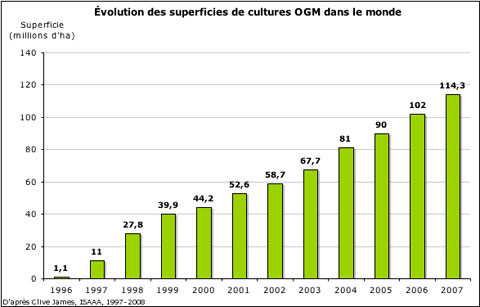
Genetically modified plants
“99% agricultural GMOs are plants with pesticides, that is to say, plants that go, either produce an insecticide to resist a pest, either will be able to absorb a herbicide without dying” explains Christian Velot, Senior Lecturer in molecular genetics (Univ. Paris-Sud XI), researcher at the Institute of genetics and microbiology (Scientific Center of Orsay). So appeared the Soybeans Roundup for example. The Round-Up is a total herbicide, It means that it kills all plants except those genetically designed to resist.
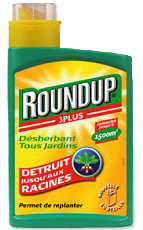
The 1% remaining are plants resistant to viral diseases, mushroom, etc. Studies are underway, for a number of years, to create plants adapted to hostile environments (arid environments, Salins, etc.).
Genetically modified animals
Genetically modified salmon is a good example. Has been added to Atlantic salmon growth hormone gene and another gene so it can even grow in the cold waters. The speed of growth is 30 to 60% higher and fish would be ready to be eaten in 19 months instead of 3 years for the ordinary farmed salmon. In autumn 2010, the FDA (Food and Drug Administration) also expressed itself on this subject : "there are reasonable certainty that the consumption of food from this animal is not detrimental to health.. This was immediately reacted as consumer organizations Food and Water Watch : “We do not see how we can ensure that this product is not harmful on the basis of four studies, which three are conducted by the livestock company”.
Pigs Giants have also been established. They have a growth rate and higher adult size 40% While their diet would 25% lower ! Of giant rabbits, of chickens without feathers and goats producing silk are other examples of what is being done in genetic engineering.
Environmental problems – Salary increase
There arises some environmental problems with the cultivation of GMOs. Indeed, as plant varieties “Round-Up Ready”, so resistant as we have seen in the Round-Up, do not undergo the herbicide damage, the farmer is generally less attention to the dose of herbicide that it will spread. It will prefer to put more to be sure, because its culture will be Anyway spared. We have huge crops in the United States for example, farmers who apply pesticides by plane, watering the surface of pesticides. Round-Up to the United States and the Canada consumption has increased dramatically since the placing on the market of transgenic varieties, doing the happiness of Monsanto that sells both GMO and seed herbicide that goes with.
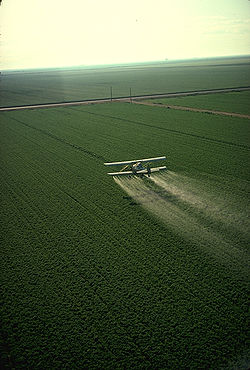
USDA Photo : Charles O'rear
Plants with modified nutritional values
Some plants have been designed to provide nutritive qualities that they do not naturally. This is the case of golden rice that has been modified to produce vitamin A. It is called golden rice because of beta-carotene that makes its yellow-orange color. The problem here is to know whether the plant in question produces still and if so, in what quantities, nutrients that it produced normally (Vitamin E, chlorophyll, gibberellic acid).
Plants with pesticides
There is also the question of these plants that are designed to produce their own pesticide. The idea is at first sight rather good because the farmer would no longer need to use this pesticide in question because the plant factory alone. The problem mentioned by Christian Velot is the impact that this plant has on the environment and on the health of the consumer. Indeed, the plant automatically produces a pesticide and root discontinues this substance in soil. Pesticides are, normally, applied in prevention or when there is a problem then qu’Here the plant created continuously in all circumstances, so even in the absence of the problem. What then is the ecological benefit if the plant creates this substance and injects it itself into the environment ?
Accumulation of pesticides in plants with pesticides
Another problem posed by these plants is the accumulation of these pesticides in tissues. What then are the implications on the animal who eats them and the man who will eat the animal ? “For plants in pesticides There is no European legislation, It is at the discretion of instances of evaluation” who can decide whether tests should be made or not, explains Christian Velot. In cases where studies are made, “for reasons of trade secret It is the seed firm that chooses the laboratory who will make these tests” and the results are not communicated for the same reasons (except in rare legal proceedings). The plant should not only be tested as a plant but also as a pesticide. This clearly demonstrates a lack of transparency, What is unacceptable.
Development of disease or resistant insects
In not producing plants resistant to certain insects or diseases, they will adapt. The vast majority will be killed but some insects naturally resistant to the pesticide will proliferate and take over. This minority of insects among the species will then become the majority, thus changing the species in a non-natural way. This is the case for example of maize MON810, BT cotton that is more resistant to the pest butterfly for which it was designed, suddenly the farmers are forced to use increasing amounts of pesticides against insects resistant. There are even other insects that now ravage cotton crops finds a scientist rather pro GMO, Dr. Kranthi.
We are also able to ask what impact a plant GMOs on non-pest insects, on surrounding plants, impact is not expected to have but that she still.
Yet very small performance gain
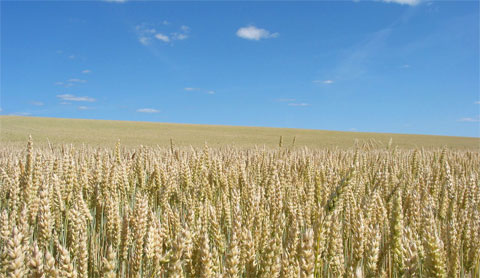
The main argument of defenders of GMOs is claim to be much more efficient with their GM seeds and thus be able to feed the starving. But scientists and experts concluded otherwise. "So far the performance of genetically modified crops to improve yields are modest and this despite considerable efforts being implemented. [for twenty years], finds the independent American research UCS group (Union of Concerned Scientists). "No transgenic crop did a real increase in performance. and only Bt corn has shown a certain extent of larger returns of exploitation"says Doug Gurian-Sherman lead author of the study of the UCS. According to reports, the earnings of BT corn, for example, are only of 3 to 4% ! The fact that cultures have best performance is more due to crop techniques that evolved much over the past 20 years.
Genetic pollution of animals
In the same way, If a transgenic salmon 5 to 6 times the normal size is released into the wild, There would be significant consequences for the environment. It will tackle larger fish, He will eat the fish with whom he had cohabited, It is more than wild fish mate (because females prefer larger males…), etc. Very quickly he would most have large salmon because they would take the place of the other. We have a glimpse of what may be the introduction of an alien species in an ecosystem with the Darwin's nightmare, for example, where the Nile perch (species non-GMO) has everything ravaged.
To control everything as stated by major groups is impossible. It is not unusual that thousands of farmed fish escape accidentally into the nature (during a big storm for example), It will be of course similarly with genetically modified fish. Claim, as the bottom multinationals, sterilize millions of fish they create seems utopian.
Genetic pollution of plants
There is the problem of genetic contamination of plants. Pollen or seeds of the PGM will contaminate other plants nearby by the wind, insects, birds, etc. Bio cultures can thus be contaminated and lose their label and shall be sold as GM. This is a threat to the biodiversity of the planet. The genetically modified plant, who is stronger, will take over on the ancestral natural species and the risk is to see disappear from the unique varieties by random mating with artificial plants. “From an environmental point of view, GMOs are involved in depletion of biodiversity and are a reflection of industrial agriculture” says the Confederation Paysanne.
The impact on health
There are many who claim that GMOs are safe for health. The EUnited States and the Canada consume indeed over the years 1996. However, it is totally impossible to know if GMOs have negative effects on health because the term “genetically modified organism” does not appear on any package of food. It is therefore impossible for a doctor to establish the link of cause and effect of a GMO. Millions of people consume every day without knowing it ! This extensive experimentation on humans is even really a, because there is no group “witness” eating GMO-free but living under the same conditions, in order to determine if GMOs have effects on health. As it is something relatively new, We can ask ourselves if there will not be consequences over the long term, in 20 or 30 years.
Controversial studies
There are only very few studies on GMOs because studies are very expensive, complexes to realize and take years of experimentation. This has not prevented the Governments and organizations of consumer protection to allow animal and human GMO consumption since 15 years ! The reason for which the placing on the market was as fast, often even before actual serious studies are conducted, is that companies want to market as quickly as possible their GMO. Faster they will sell more quickly they will recover their investment. Are the increase of chronic diseases and the weakening of the immune system consequences of GMOs ? It is hard in these terms to know, even if some scientists assume.
A few examples of studies (independent) already carried out
Terje Traavic, Institute of Gene Ecology molecular biologist, States that’ “one of the major risks is that 95% scientists working for the industry and that 5% only are really independent“.
In 2007, a study conducted during 3 month by the CRIIGEN (Committee for research and independent Information on genetic engineering) reveals 60 significant differences between the rats consuming the genetically modified maize (NK603, corn developed by Monsanto to resist the Round-Up) and the control group rats. The differences affect the kidneys, the brain, the heart, the liver and the weight animals. These findings “could be warning signs of toxicity” says Greenpeace. [4] The CRIIGEN analyzed request for authorization of this maize from Monsanto and finds that further studies should be made.
Another study conducted during 3 months in rats in 2007, concerning other transgenic maize from Monsanto (MON863), shows that rodents are also signs of toxicity at the level of liver and kidneys. [4]
In 2008, the University of Vienna in Austria has shown that the 3rd generation of mice fed Monsanto's GM corn (NK603 x MON810) had more difficulties to reproduce. In addition, the number and weight of small were lower.
The CRIIGEN issued end 2009 a study on three GMOs : MON810, the MON863 and the NK603. Here's the CRIIGEN says in a press release : “for the first time in the world, confidential Monsanto tests allowing international authorities of three GMO marketed were contre-expertisés by the CRIIGEN researchers, the University of Caen and Rouen. These GMOs produce insecticides (MON810, MON863) or absorb the weedkiller Roundup (NK603)” and adds “This international publication shows special effects related to the consumption of each GMO, different by sex and dose. They are related to livers and kidneys, the main bodies reacting during chemical food poisoning. Other effects touch the heart, adrenal, the spleen and blood cells. […] Also short tests and if few animals studied by group cannot provide final proof of safety or toxicity, they are, however, quite disturbing to claim that studies are redone on a longer, on several species and generations with a number of individuals guaranteeing sufficient power of statistical tests”.
Click the link below to listen to the audio clip of journalist, Editor Sébastien Portal [5] :
GMO - Russian study that could uproot an industry

The era of experimentation
In the words of Christian Velot, “We don't control nothing or not much” and it goes further in stating that’ “There is not a single scientist in the world, and regardless of the number of prizes Nobels that he could earn his career, who would be able to identify comprehensively the consequences in the short, medium or long term from genetic modification on metabolism”. The field of genetics is so complex that scientists are testing to replace a gene and see that it has the effect.
A marker gene is introduced : antibiotic resistance gene. “It is not removed after the fact, It remains in the plant” says Christian Velot. The question is also whether that becomes this antibiotic in the body of the animal or the person who eats the plant.
Uncontrolled side effects. Most of the genetically modified animals are already not viable. Others develop new features and not expected. Fish Tylapia for example is a freshwater fish, the genetically modified Tylapia which grows twice faster, happens to live in salty water. What will happen if this fish arrives accidentally in the seas and oceans where in normal times he would die ?
Seed testing and patenting of life
Patent a plant allows a company to simply appropriate it.
Many patents on gene sequences, micro-organisms or GMOs are held by large firms. The patentability of life is a source of many controversies. For ethical reasons, patenting the living in order to make it an object of merchandising is to much nonsense. Patented seed helps multinationals, like Monsanto for example, to have the control over the peasants who do not have the right to sow the seeds from one year to another under penalty of prosecution. It must therefore in buys every time the firm news. “GMOs are not a solution to the problem of hunger in the world, as would have us believe the seed industry. On the contrary, by the system of patenting of seeds, they keep the peasants in economic dependency, by forcing them to buy seed each year“, exclaims the Confederation Paysanne.
In other words, “the consequence of the patenting of life is that the patented product is the holder of the patent and that any third person wishing to use this product must financially compensate the owner” [6].
Another consequence is that companies like Monsanto will in poor countries or developing and take ownership of the active substances of medicinal plants local. This is called the “biopiracy” industrial.
Reactions
“The process that is to impose GMOs on the planet is an anti-scientific and undemocratic process […] If the planet is already a large trash can isn't a reason to make a vast laboratory bench”, Christian Velot.
"It is scandalous that these are companies that not only lead the studies on their products but that they are also analyzing the results ! », Arnaud Apoteker, GMOs of Greenpeace France campaign.
« Highlighting of negative impacts of GMOs on the reproduction of beings living is new and extremely worrying ! Many regulatory authorities, as theEFSA in Europe, have yet considered them safe based on short-term studies provided by the industrial... It must urgently withdraw from the market the suspect products and complete re-evaluation of the GMO process initiated by the French Presidency of the EU. We are not Guinea Pigs ! », Arnaud Apoteker.
«The CRIIGEN denounces the previous opinions of the EFSA., AFSSA (become l’HANDLES) and the CGB, European and french food safety committees, who commented on the absence of risks on these tests of 90 days only, for which they do not analyzed themselves in detail statistics., CRIIGEN.
“The impact on the environment (genetic contamination) and the potential health risk (yet poorly known due to the lack of studies on the subject) are too serious to leave the seed industry to appropriate our environment, our agriculture and the future of our food », Confederation Paysanne.
Similar articles :
Main sources :
- www.Monsanto.fr
- Conference of Christian Velot, Toulouse 2005, “GMOs, What is ?”
- Documentary : GMOS – Monstrous animals of genetics
- [3] www.Greenpeace.org/France/Campagnes/OGM
- [4] www.Greenpeace.org
- [5] www.sebastienportal.com
- [6] www.infogm.org
- CRIIGEN
- www.OGM.gouv.qc.ca
- Free photos
USDA Photo : Charles O'rear

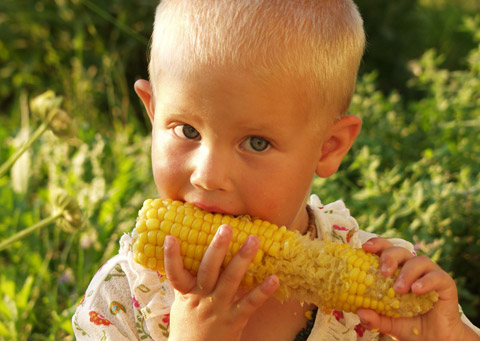
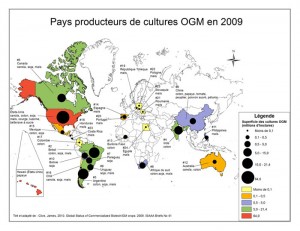
Thanks for this article which includes the various problems related to those GMOs… Provided that Governments put order in all that, because at the moment private companies, and in particular Monsanto, obviously have no interest, without external pressures, to further control the risks that cause their products.
An enriching article..
I have a question:
What are the arguments that led to limit GMO crops???
Thanks in advance for your answers
You therefore know nothing about GMOs but treat them as the worst cancers. The truth is that GMOs exist since ancient times : It then changed plants by hybridization. We continue to make in France (the Tilling technique) but it is very bad at GMOs, so it was explained to everyone that it is very very bad, without any evidence, and we do everything to ban. And if possible we play on the transgenic, What has no report, and it exaggerates all figures (salmon 6 times bigger, Ben see, why not… Read more "
I totally agree with your remark
Very nice and I noticed in your logic.
Hello
It's reasonable to ask questions after reading these articles.
To be honest it's scary , and declare that 5 years you have had that 268 views while some youtubeurs and YouTubers ” fools gladly” make tens of thousands of views speaks volumes about propaganda , media lies,and unconsciousness of a large part of the population
I like ogéaime !
pk tu dis ca tg laboratory ksos
what
Hello, I can not find the éventutelles limits of GMO cultivation in open fields in the article.. Can you tell me?
Thanks a lot!
Hello I would like to know the impact of GMOs on health ethics framework . Thank you
GMO = Death of the human race GMO = Kills humanoid In 50 years the food industry and food industry admit that it's a danger and it is too late, all as the tobacco industry has started 50 years to admit that tobacco kills and is fatal to humans; DO NOT ACT NOW is killing our children and kill the future of the human race. It is known that allergies have increased since the arrival of GMOs, we know that cases of disease have been detected in mice, rats and chickens in laboratories which they tested these GMOs… Read more "
GMOs have at the same time helped to save lives! The total ban on GMOs in France limits search.. GMOs are not directed only for food do not forget! Many diseases today have treatment thanks to GMOs. And as we talk about resistance should not forget that the simple act of taking antibiotics and food in hyper-sanitized environments also helps make many resistant and virulent bacteria. And I think all the people who are cons GMOs benefit of this medication
i would like to know if memes are a good investment
Thank you for the ground-work done so far! But my question is : why do the continue modifying organisms for food purposes and pretending to solve the problem of hunger in the world whereas scientist proved that there is no food production growth; aside of Maze which has a slight one of 3-4%???
I don’t know much about the subject for plants but for the animals, the article also talk about salmons that would grow in 19 months instead of 30, which is a 58% increase. And beside, their are useful for other problems like against virus (pesticides) and others.
I believe their are very important for the future but their current use is not right often. Because it is mostly big companies wanting short term profit and not long term benefit for humanity…
thank you for this wonderful insight it was a great help to my understanding regarding GMOs
Sub-Saharan Africa cultivates peanuts with a risk of finding GMOs in our peanut seeds and oils even though we use chemical fertilizers. Nalbandian and thimothe ird